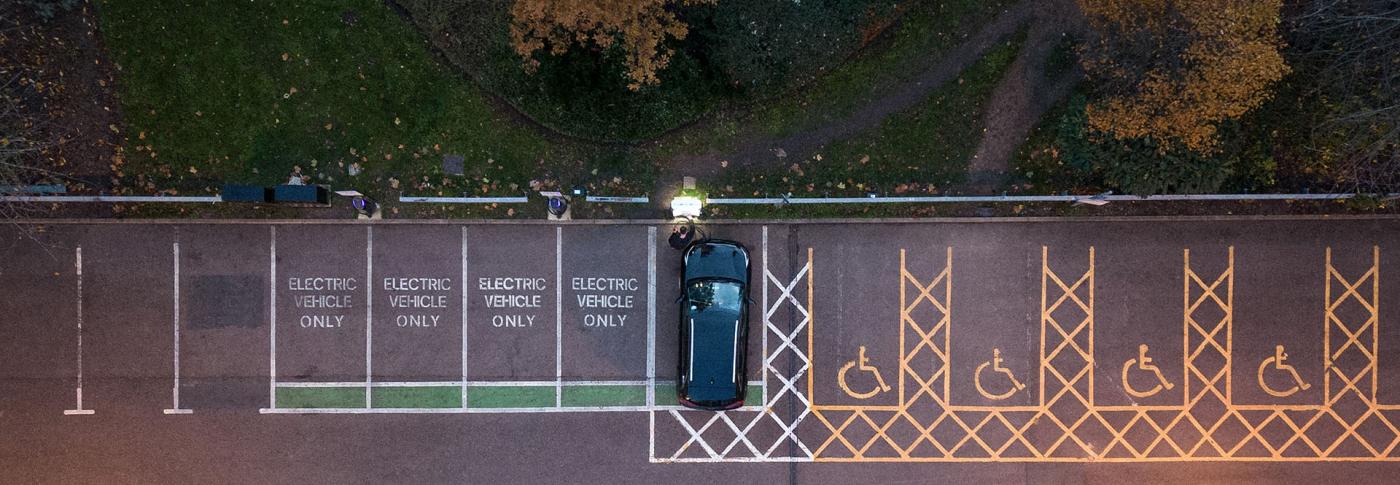
GB 36 Bus electricity transmission network model
The National Electricity Transmission System (NETS) of Great Britain was modelled with precision in DIgSILENT PowerFactory, using a 36-bus equivalent network. We divided the system into 36 zones, for which the relevant generation and demand were evaluated. Each zone has generators according to fuel type, and the demand was split into active and reactive. We also calculated line impedances to represent the electrical distance between the zones.
Download the GB 36 Bus PowerFactory model
Modelling assumptions
The Electricity Ten Year Statements (ETYS) 2013 model forms the basis for the reduced 36 bus model. The equivalent impedances of the lines between the zones have yet to be updated since 2013. The approach adopted to create this model was initially to segregate the transmission network into different regions. A substation represented each region, connecting the relevant generators and loads. An equivalent generator represented all generators in the region regardless of the electrical distance between them. Transmission lines were then created to represent the resulting impedances between the regions based on the ETYS 2013 model. The model can be configured for different study scenarios. It should be noted that the 36-bus model has limitations and may not reflect the current behaviour of the GB grid due to the modelling assumptions made and the age of the data.
- Generator Parameters:
The MVA rating of each machine was calculated by assuming a power factor of 0.8. The parameters for each machine such as the synchronous reactance, transient and sub-transient reactance were derived from typical generator type data available in PowerFactory for a machine of similar fuel types. The ratings of transformers were chosen in line with the ratings of the generators. - MW Dispatch:
The dispatch of generators has been left flexible to the user, depending on the type of study to be carried out. - Demand:
The active power demand used in this model is the net demand after taking into account the contribution from embedded generation. The installed capacity of embedded generation is available for wind-based generators and other generators on an individual zone basis. The scaling factor assumed for embedded wind was 0.7 and that for the other embedded generators was around 0.5. The gross reactive power demand is used in the model, and this assumes that there is no reactive power contribution from embedded generation. - Line Impedances:
The R, X and B parameters were obtained for all the branches and the equivalent impedance between zones were evaluated. The impedances are based on ETYS 2013 zone interconnections. - AVR model:
The generic AVR model of type ‘avr_AVR’ was used for each synchronous generator connected to the network. - Governor model:
The generic governor model of type ‘gov_GOV’ was used for each synchronous generator connected to the network. - HVDC model:
The Line Commutated Converter (LCC) type HVDC has been included in the 36-bus network to represent interconnectors to the GB network. - System Losses:
The system losses were evaluated to be around 2-3 % of the winter peak demand. - Generic Transformer Types:
- A few Generic Transformer types have been added to help Users connect their models for testing purposes:
- 150MVA_400/33kV
- 460MVA_400/132kV
- 120MVA_400/132kV
- 1000MVA_400/275/13kV
- 500MVA_400/275/13kV
- A few Generic Transformer types have been added to help Users connect their models for testing purposes:
- For information only purposes, the 36 nodes in the reduced 36 bus model have been mapped to our best ability to the ETYS Zones as shown below:
| 36 Bus Zones | ETYS Zones |
|---|---|
| 1 | F6,E8,E7,E1,E6 |
| 2 | B2, B1 |
| 3 | C4,C7,C9 |
| 4 | H1,H2,H6 |
| 5 | G1,G5,G6,G7 |
| 6 | B3,B4,D6 |
| 7 | A8 |
| 8 | A1,A4,A7 |
| 9 | A3,A6,A9 |
| 10 | C1,C2,C3 |
| 11 | C5,C6,J8 |
| 12 | J1,J2,J3,J5 |
| 13 | D4,D5,J4,J6,J7,L8 |
| 14 | L3 |
| 15 | L7 |
| 16 | L2,L5 |
| 17 | K1,K2,K4,K6 |
| 18 | K5 |
| 19 | P3 |
| 20 | M4,M5,M6,M7,M8 |
| 21 | N2,N4,N5,N6,N7,N8 |
| 22 | N1,N3 |
| 23 | R4,R5,R6 |
| 24 | P1,P2,P4,P5,P6 |
| 25 | P7,P8 |
| 26 | Q5,Q6,Q7 |
| 27 | Q2,Q4 |
| 28 | Q8 |
| 29 | S1 E |
| 30 | S1 W |
| 31 | S2,S4,S6,S7 |
| 32 | S3, S5 |
| 33 | T3 |
| 34 | T4 |
| 35 | T1,T5 |
| 36 | T2 |
For any queries, email [email protected]
